Hybrid Vehicles
News with a French Flavour

So what’s bubbling on the stove in France? Here are some new French cars soon to be coming onto the market. These models will definitely be sold in Europe, hopefully making their way south to roll onto our showroom floors.
Renault 5
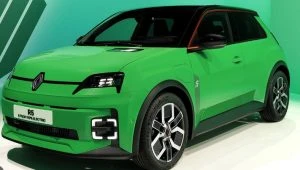
The all-new Renault 5 is back! This is a cool-as retro-inspired EV hatchback that has captured styling from the old Renault 5, embedding it into the new car’s design and detailing. Though a throwback to the iconic Renault 5 of the 1970s–1980s, the new wee car packs plenty of clever technology under its skin.
The interior is fresh and inspiring, and its clever infotainment system is integrated with Google services. The car’s two-step dashboard looks incredible, while the denim-like trim works nicely both as visual and tactile stimulation. The seats are made from recycled plastic bottles, and there are plenty of bright colour schemes for the upholstery and interior. You can even get a little wicker basket to sit in the passenger footwell for carrying your baguette! All the controls are nicely wrapped around the driver, and the new Renault 5 gets a 10.0-inch infotainment screen and a 7.0-inch digital driver’s display.
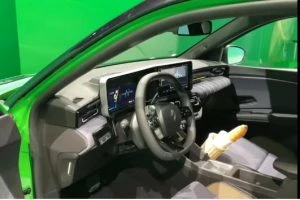
This is a direct alternative to the MG 4 and BYD Dolphin, as it boasts two battery options and a range of up to 390 km. Like the old one, this is front-wheel-driven, and there are three levels of power output to choose from. Entry-level cars have 71 kW, enabling it to run the 0–100 km/h dash in around 12 seconds. The 92-kW version performs the same sprint in 9.0 seconds. And the top of the range 112-kW version sees the little hatchback making it in around 8 seconds. There is even a suggestion that there will be a hot-hatch version of the new little Renault 5, known as the Alpine A290. So, for those looking for sizzling acceleration, this will be worth the wait.
A choice of two battery packs is available for powering the Renault 5’s electric motor. A 40-kWh pack is great for city commuting. There is also a larger 52-kWh battery pack, which gives you a further range. Both battery options will charge from 15% to 80% in around 30 minutes on a DC fast charger.
The new Renault 5 EV Hatch goes on sale in France in September of this year, where it’ll cost around £22,000 in the UK. Isn’t it great to see it back?
Peugeot 5008
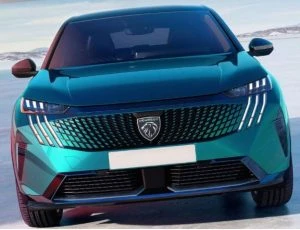
After a seven-seater EV SUV? There aren’t too many of these available; however, the new Peugeot 5008 boosts the options with its E version.
With similar styling to the E-3008, the Peugeot E-5008 shares parts with that car. Snazzy slim headlights are neatly hidden below the bonnet line, along with the car’s signature Peugeot three-claw LED DRLs. Side on, the Peugeot E-5008 is a boxy SUV, hinting towards the generous interior dimensions that are found inside.
The new interior styling and infotainment technology is brilliant. In fact, the Peugeot E-5008 has one of the most stylish and distinctive interiors we’ve seen in cars for a very long time. So, if that hasn’t pricked your ears up, then I’m not sure what else will. The multi-layered dash is wrapped in a groovy grey fabric, the major controls are angled towards the driver, and sitting proudly on top of the dashboard is a massive curved 21-inch screen that houses both the digital driver’s display and the infotainment system. The latest generation of Peugeot’s i-Cockpit system is incorporated into the style and function of the new screen.
With all seven seats in place, you have 259 litres of boot space to put your shopping bags into. A massive 748 litres of luggage space is available with the third row folded down. The Peugeot E-5008 can be had with a 98-kWh battery that is paired to a 172-kW electric motor. This is plenty of power with an equally impressive 650 km range. Then there is the 157-kW motor available, with its 73-kWh battery pack and a slightly shorter travel range. At the top of the tree sits a dual-motor Peugeot E-5008 model with close to 240 kW of power on tap. Its 73-kWh battery is said to provide this model with a range of around 500 km.
The Peugeot 5008 is also available as a hybrid version. Its rather smooth 102-kW petrol engine is mated to a six-speed dual-clutch automatic gearbox, and there’s an added electric motor to boost power and efficiency.
A plug-in hybrid joins the gang in 2025. This will use a 112-kW petrol engine paired to a 90-kW electric motor. This combined power output is nice and strong, while also making this PHEV capable of covering 75 km on electric power alone.
Citroen e-C3
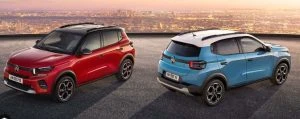
The new Citroen e-C3 has been revealed, and it is an affordable electric SUV boasting up to 315 km of range.
The e-C3 is a funky wee vehicle that is said to be a very affordable buy. It uses an 85-kW electric motor to power the front wheels, capable of propelling the car from 0 to 100 km/h in around 11–14 seconds, depending on the model.
The Citroen e-C3’s interior is comfortable, with some cool-looking fabric on the dash. The two-spoke steering wheel has that funky bit of French flair we all love. To keep the cost down, entry-level models have a mount for your phone instead of a touchscreen, which allows you to access satellite navigation, the radio, and music streaming in this way. All other models have a 10.25-inch touchscreen with all the goodies, and all cars have a classy digital driver’s display.
When these models make it Down Under, we’ll give them a full write-up in our car reviews pages, so if you’re interested, come back later for more.
Sweet Scandi Designs For 2024
There are three main brands of Swedish-designed cars made in 2024. We all know about Volvo; some of us may know of Polestar, and maybe a few of us have heard about Koenigsegg. Apart from Scania, who makes trucks and other things, it’s the aforementioned manufacturers that are creating and making new vehicles.

Volvo
One of the oldest companies in Sweden, Volvo has been making cars since 1927, when Assar Gabrielsson and Gustav Larson worked together to make a substantial car that would be able to withstand the rigours of the Scandinavian climate. The first model was called the OV4 and had two round lights at the front, and the rectangular carriage with four wheels at the corner design that was typical of the early cars of 1900–1925. In the 1930s, Gabrielsson and Larson made the rather stylish and streamlined PV36, which proved to be a solid and comfortable means of transport.
Another standout car Volvo made was the stunning P1800 Coupe of the 1960s. From the 1980s–2000, Volvo were typically making very comfortable, safe, reliable cars that were typically wedge-shaped or boxy in their outline. Since the turn of the century, 2000–2024 has seen Volvo continue to make supremely comfortable cars with plenty of style and a more rounded shape that can slip through the air a little easier. Volvo have continued to excel in the crash testing and crash safety data.
In 2024, Volvo make a wide range of sedans, wagons, and SUVs. Current models for Australia include the:
- Volvo C40 SUV (one model), which was the brand’s first small electric vehicle (EV). A single electric motor or a dual electric motor are available to power the C40.
- Volvo EX30 Wagon (two models), a brand-new EV wagon with plenty of safety.
- Volvo S60 Sedan (one model), one of the most beautiful luxury sedans currently on the road that is powered by a mild hybrid engine that makes it both fuel efficient and swift. The AWD sedan is loaded with luxury and places a high priory on occupant safety, comfort, and the latest technology. It is currently one of the best luxury sedans on the market.
- Volvo V60 Cross Country Wagon (one model). Offering style, luxury and safety, the V60 Cross Country Wagon offers a credible light off-roading capability along with its perfect take-the-family-on-an-adventure prowess. Like the S60, the V60 is powered by a mild hybrid engine, is available in AWD, and is loaded with equipment.
- Volvo XC40 SUV (three models). The Volvo XC40 offers a choice of petrol engines. But you can also opt for the fully electric XC40 Recharge model.
- Volvo XC60 SUV (four models). The Volvo XC60 medium-sized SUV is superbly comfortable, luxurious, and safe. You have a choice of mild hybrid or powerful plug-in hybrid powertrains.
- Volvo XC90 SUV (three models). The Volvo XC90 is a large, luxurious SUV that can seat up to seven occupants. The mild hybrid or plug-in hybrid powertrains deliver plenty of punch and economy. This is one of the best vehicles in its class and it’s also very safe.

Polestar
Polestar was founded in 1996 by Volvo Cars’ partner Flash/Polestar Racing and was acquired in 2015 by Volvo. Polestar was also secured by Greely in 2010. Polestar vehicles are a brand of automotive vehicles that have their design headquarters in Sweden, but the vehicles are produced in China. Polestar vehicles are full EVs with luxury and performance, and are considered as a separate EV performance brand from Volvo. In 2024, Polestar makes stylish hatchbacks, SUVs, and coupes. The current models for Australia include:
- Polestar 2 Hatch (three models)
- Polestar 3 SUV (five models)
- Polestar 4 Coupe (two models)

Koenigsegg
On 12 August 1994, Christian von Koenigsegg (22 years old) decided to follow his dream and build the world’s greatest sports car. Thirty years later, the dream lives on. Having made many models over the three decades, Koenigsegg now offers two models in Australia from an outlet in Victoria:
- 125 Jesko, a supercar powered by a twin-turbocharged 5.0-litre V8 engine which delivers 955 kW of power and as much as 1500 Nm of torque to the rear wheels.
- Gemera, a supercar with four seats. This is a plug-in hybrid supercar made for touring (rather quickly). The Koenigsegg Gemera uses a twin-turbo 2.0-litre three-cylinder engine that is also matched up to three electric motors – one electric motor powering the front wheels, and one electric motor on each rear wheel as well. Combined outputs stand at a whopping 1268 kW of power and 3500 Nm of torque, which is sent through a single-speed Koenigsegg Direct Drive transmission to all four wheels. The 0–100 km/h sprint is achieved in less than 2 seconds, while the car’s top speed is around 400 km/h.
We’ll add more in-depth reviews of these cars (except for the Koenigseggs) at our car reviews page at some point in the future, so have a look over there to find out more.
Hybrids We’re Excited About For 2024
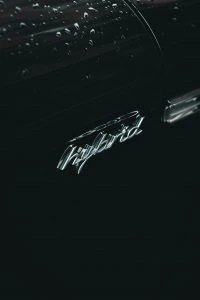
The pool of new hybrid vehicles from which a new car buyer can buy from has grown considerably over the last couple of years. The mainstay of hybrid manufacturers (e.g., Honda and Toyota) that have been in the hybrid game for over two decades are still providing us with some great vehicles; however, we have plenty of new hybrid options to choose from now.
Hybrids vehicles are vehicles that are powered by an internal combustion engine (ICE) but also have one or more electric motors to enhance a vehicle’s fuel economy, lower its overall emissions (gCO2/km), and add to the car’s performance. Hybrids also have a battery pack to source electricity for powering the electric motors. The battery is usually charged through regenerative braking and by the internal combustion engine, though some cars, like the Mitsubishi Outlander, are plug-in hybrids (PHEVs), meaning that their battery packs can also be charged up when not being driven, like a full electric vehicle (EV).
At the moment, hybrid vehicles are fantastic and make a lot of sense. For much of the time, they happily pootle about town on electricity alone (no emissions and no fuel usage). Then, when longer journeys are necessary (out of town) or if you need to tow something, a hybrid vehicle can make use of its ICE power and the country’s fuel network for taking you places far beyond the infrastructure for battery recharge.
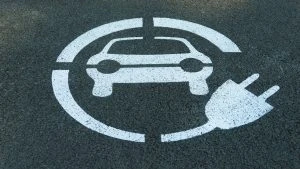
So, what new hybrid vehicles can we buy in 2024? I’ve endeavoured to break down the new hybrid vehicles according to their price bracket. There are actually over 70 new hybrid vehicles available today. See our review pages for more details on most of these, and we’re adding to our list of reviews all the time.
Up to $50,000
- GWM Haval Jolion SUV
- Hyundai Kona SUV
- Hyundai i30 Sedan
- GWM Haval H6 SUV
- Kia Niro SUV
- MG HS Plus SUV
- Subaru Forester SUV
- Toyota RAV4 SUV
- Toyota Yaris Cross Small SUV
- Toyota Camry Sedan
- Toyota Corolla Hatch
- Subaru Crosstrek SUV
- Toyota C-HR Small SUV
- Toyota Yaris Hatch
- Toyota Corolla Sedan
- Honda HR-V Small SUV
- Toyota Corolla Cross SUV
$50,000 to $75,000
- Peugeot 408 SUV
- Honda Civic Hatch
- Honda ZR-V SUV
- Honda CR-V SUV
- Mini Countryman SUV/Hatch
- Lexus NX SUV
- Toyota Corolla Cross SUV
- Subaru Forester SUV
- Toyota RAV4 SUV
- Honda Accord Sedan
- Nissan Qashqai SUV
- Toyota Camry Sedan
- Toyota Kluger SUV
- Cupra Leon Hatch
- Cupra Formentor SUV
- Lexus ES Sedan
- Lexus UX SUV
- Mitsubishi Outlander SUV
- Kia Sorento SUV
- Nissan X-Trail SUV
- GWM Tank 300 SUV
- Hyundai Santa Fe SUV
- Alfa Romeo Tonale SUV
- Mitsubishi Eclipse Cross SUV
- Kia Niro SUV
- MG HS Plus SUV
- Peugeot 308 Hatch
- Ford Escape SUV
$75,000 to 100,000
- Kia Sorento SUV
- Mazda CX-60 SUV
- Alfa Romeo Tonale SUV
- Peugeot 3008 SUV
- Volvo XC60 SUV
- Toyota Kluger SUV
- Peugeot 508 Wagon
- Lexus ES Sedan
- BMW 3 Series Sedan
- Peugeot 508 Hatch
- Mini Countryman SUV
- Lexus NX SUV
- Lexus RX SUV
$100,000 to $125,000
- Mercedes Benz GLC-Class SUV
- Lexus RX SUV
- Volvo XC60 SUV
- Audi Q5 SUV
- BMW X3 SUV
- Land Rover Discovery Sport SUV
- Land Rover Range Rover Evoque SUV
$125,000 to $150,000
- Jeep Grand Cherokee SUV
- Land Rover Defender SUV
- Land Rover Range Rover Velar SUV
- Volvo XC90 SUV
- Mercedes Benz E-Class Sedan
- Lexus RX SUV
$150,000 to $200,000
- Lexus LM People Mover
- Audi Q8 SUV
- Porsche Cayenne SUV
- BMW X5 SUV
- Land Rover Range Rover Sport SUV
$200,000 and Beyond
- Lexus LS Sedan
- Lexus LC Coupe
- Mercedes Benz AMG GT Coupe
- Bently Bentayga SUV
- McLaren Artura Coupe
- Bentley Flying Spur Sedan
- Ferrari SF90 Stradale Coupe
- Ferrari 296 GTB Coupe
- Ferrari SF90 Spider Convertible
Is It Better to Buy a Hybrid Vehicle or Electric Vehicle in 2024?

So, you’re looking to purchase an eco-friendly car in 2024?
That’s awesome!
There are so many fantastic options available right now that all help you to do your part to protect our environment.
Of course, one of the most common questions we’re getting right now is:
Should I buy a hybrid or electric vehicle in 2024?
That’s why we’ve put together this helpful guide to give you a better understanding of the differences between electric and hybrid vehicles, as well as what else you need to know to make the right decision.
So, buckle up, and let’s get into it.
Remind me: How does an Electric Vehicle work?
Electric Vehicles (EVs) substitute a traditional internal combustion engine for an electric motor that’s powered by a battery mounted in the car. The battery is then charged by being plugged into an EV charging station or wall outlet.
We now also have Fuel Cell Electric Vehicles (FCEVs) in Australia as well that are powered by a Hydrogen Fuel Cell, as opposed to an onboard battery.
While these are not as popular as traditional Battery Electric Vehicles (BEVs) just yet, they are starting to gain more momentum – especially as refuelling them can take just a fraction of the time it takes to recharge a BEV.

How does a Hybrid Vehicle work?
Hybrid Vehicles combine traditional petrol/diesel engines with an electric propulsion system to provide two distinguishable power sources that can quickly adapt to your driving style.
As an example, the internal combustion engine will typically kick in on highways, while the electric motor will take over at slower speeds around suburban streets.
There are three main types of hybrid vehicles:
Standard hybrids
These alternate automatically between petrol/diesel and electric power, which is charged while the car runs on fuel.
Plug-in hybrids
The electric power source charges from an external port to give the car a greater electric-only range.
Mild hybrids
These vehicles come with a small internal battery pack typically to provide a boost in performance or economy.
What are the main differences between Electric and Hybrid Vehicles?
Aside from their power source, there are a few key differences between electric and hybrid vehicles that may have an impact on your final decision:
Refuelling
Hybrid vehicles can be fuelled with petrol or diesel, and the battery is typically recharged by the engine while driving. Electric vehicles must be charged with an external power source.
Emissions
Hybrids produce fewer emissions than traditional cars, while fully electric vehicles produce zero emissions.
Range
A hybrid vehicle has no set range as long as fuel access exists. An electric vehicle’s range is limited by its battery capacity, which is important to consider when taking longer trips.
Cost
Hybrid vehicles are typically cheaper than EVs to purchase, however, ongoing maintenance costs can be much higher over the life of the car.
As you can see, there are several pros and cons to each type of vehicle, and one of the most important things to consider when making your decision is accessibility to EV charging stations – especially if you like to take longer driving trips.
How easy is it to recharge your electric vehicle EV in Australia?
Currently, there are more than 3000 dedicated electric vehicle charging points in Australia – with more than a third of them located in NSW.
While this is not a huge amount for a country the size of Australia, the infrastructure will continue to be developed over time to make our roads much more EV-friendly.
Of course, if charging your car is a concern to you, you always have the option of buying a hybrid that can also run on petrol or diesel if EV charging stations are lacking.
It’s worth noting here that our State and Federal governments have created several EV incentives as well to make purchasing an electric vehicle more attractive to more people. This is something you should consider when making your decision.
So, should you buy a Hybrid or Electric Vehicle in 2024?
At the end of the day, the choice of whether to buy an electric or hybrid vehicle in 2024 is really up to you. Make sure to consider why you need the vehicle and how you intend to use it when making your decision.
That being said, if you do need extra help in finding the right vehicle for you, Private Fleet can help.
Find the right eco-friendly vehicle at the right price with Private Fleet
Private Fleet empowers you to gain all the benefits of a fleet purchase but as a private buyer.
Backed by decades of vehicle industry experience, fleet buying power and a network of car dealers across Australia, we are here to ensure that buying your next hybrid or electric vehicle in 2024 will be as straightforward as possible for you.
Shopping for a car is an enjoyable process – let us make it hassle-free, too.
Reach out to us today for a seamless and simple car-buying experience.